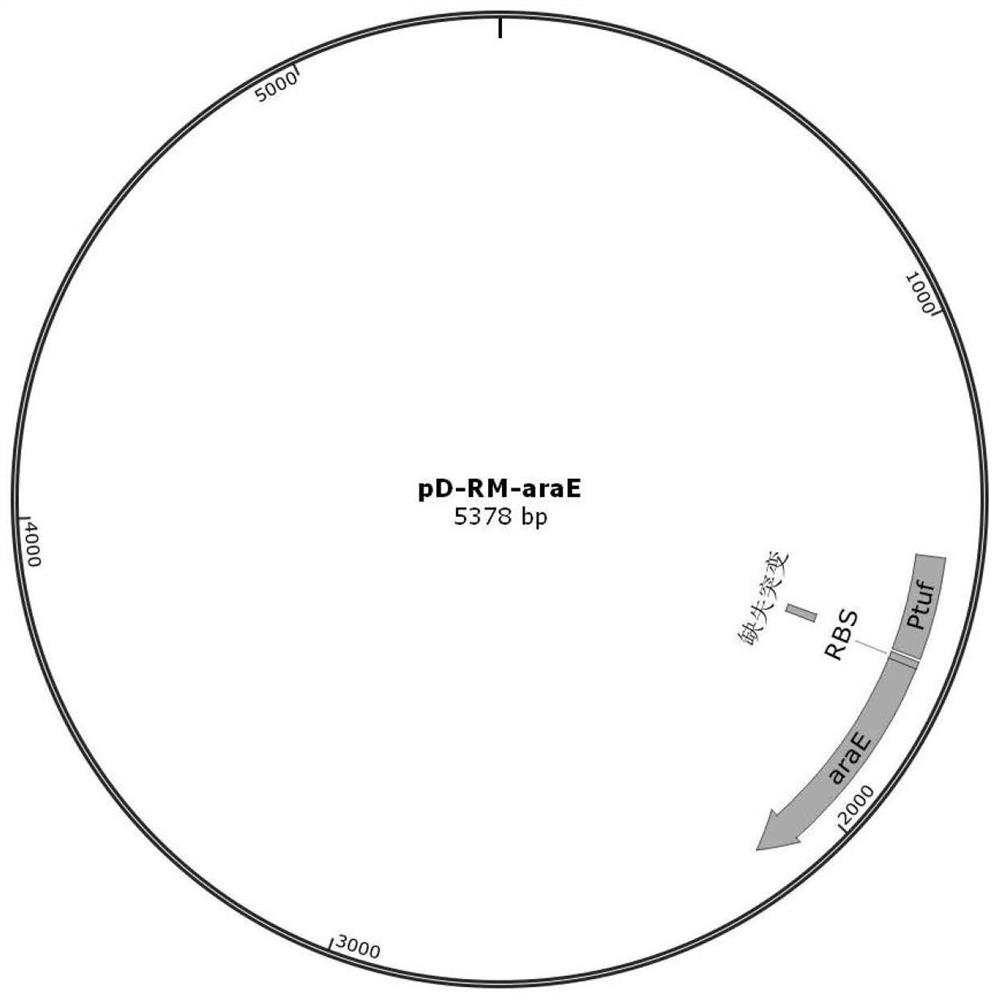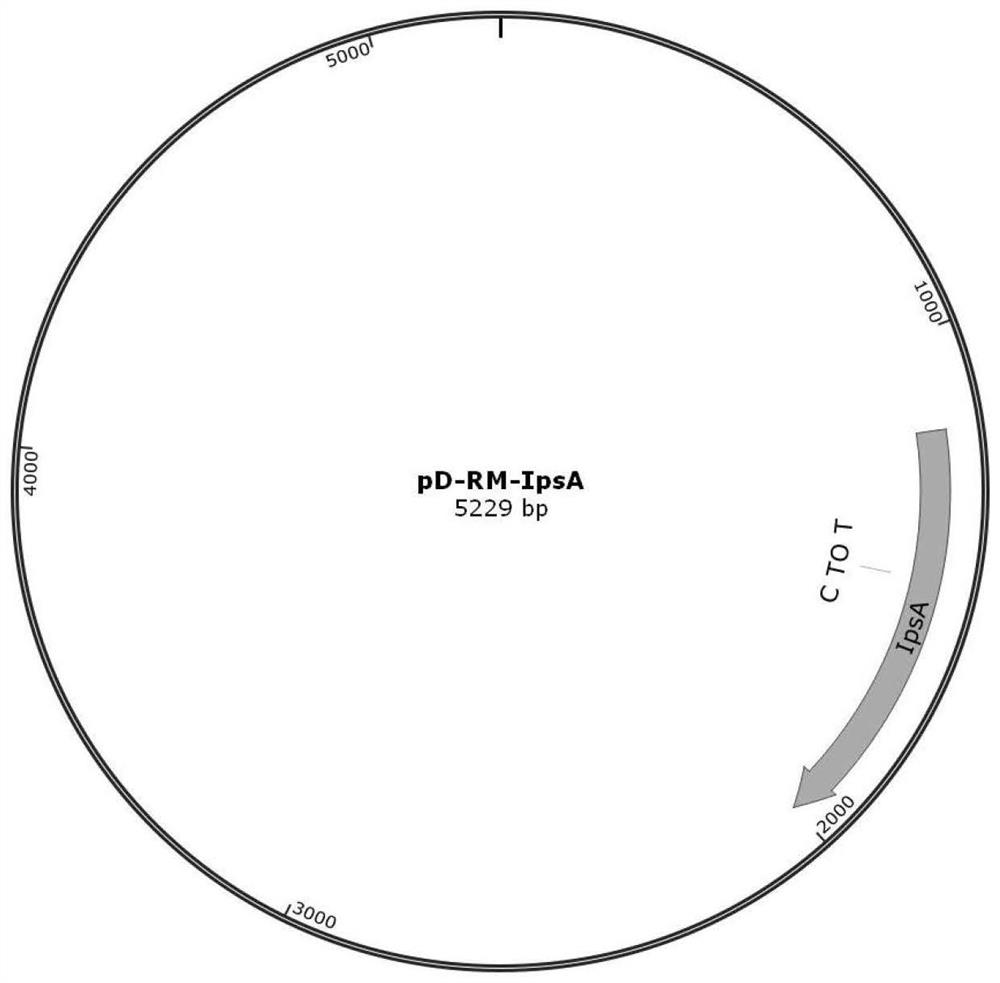Corynebacterium glutamicum transcription regulation factor IpsA mutant and application
A transcriptional regulator, Corynebacterium glutamicum technology, applied in application, bacteria, genetic engineering and other directions, can solve the problem of unclear carbon metabolism repression effect mechanism, etc., and achieve the effect of improving xylose utilization ability
- Summary
- Abstract
- Description
- Claims
- Application Information
AI Technical Summary
Problems solved by technology
Method used
Image
Examples
Embodiment 1
[0021] Embodiment 1: the construction of recombinant bacterial strain CGL11
[0022] In Corynebacterium glutamicum (Corynebacterium glutamicum) ATCC 13032, the pta-ackA gene operon of the by-product acetic acid production pathway, the by-product acetic acid production pathway actA gene and the by-product lactic acid production pathway ldh gene were knocked out, and the anaplerotic pathway phosphoene was knocked out on the chromosome Insert P before the start codon of alcohol pyruvate carboxylase sod Strong promoter, insertion of P before the start codon of the anaplerotic pathway pyruvate carboxylase pyc gene on chromosome sod Strong promoter, pentose phosphate pathway transketoaldase tkt gene on chromosome Insert P before the start codon sod Strong promoter, pentose phosphate pathway transketolase tal gene on chromosome Insert P before the start codon sod Strong promoter, insertion of lactate dehydrogenase ldh site on chromosome P tuf The arabinose transporter gene araE wa...
Embodiment 2
[0024] Embodiment 2: acquisition and confirmation of transcriptional regulator IpsA mutant
[0025] In the Chinese patent "Xylose-fermenting Corynebacterium glutamicum and its construction method and application based on evolutionary engineering" (application number: CN201810541718X), we obtained the evolved strain Cev2-18-5 (preservation number CGMCC No. 15040), which is good The rate of xylose consumption was significantly increased under both aerobic and anaerobic conditions. Whole genome sequencing was performed on the evolved strain Cev2-18-5 and the starting strain CGL11.
[0026] The specific operation is as follows: activate the starting strains CGL11 and Cev2-18-5 into a 5mL BHI test tube at 220rpm, activate overnight at 30°C, and transfer the inoculation amount of 500μL to a 20g L -1 Glucose-based CGIII medium (filling volume: 50 mL / 500 mL Erlenmeyer flask), cultured at 220 rpm and 30°C for 12 hours. Collect the cells by centrifugation at 4°C and 5000rpm, wash the ...
Embodiment 3
[0032] Example 3: Mutations introduced into CGL11 to obtain strain CGL11-RM-BEI
[0033] The promoter of the xylose utilization operon gene xylAB and the promoter of the arabinose transporter gene araE on the chromosome of the starting strain CGL11 were replaced with the mutated promoter, and the transcriptional regulatory gene ipsA was replaced with the mutated transcriptional regulatory gene. The specific operations are as follows :
[0034]Using the genome of the evolved strain Cev2-18-5 as a template, RM-BSXR-1 (SEQ ID NO: 8) and RM-BSXR-2 (SEQ ID NO: 9) were used as primers to amplify the xylose utilization operon gene xylAB A total of 1kb fragments are located upstream and downstream of the promoter mutation region. This fragment and the pD-sacB plasmid (commercial product) are double digested with Thermo Fast digest BamHI / HindIII, and after ligation and transformation, the plasmid pD-RM-BSXR (see figure 1 ), the sequence detection was correct.
[0035] Using the genom...
PUM
 Login to View More
Login to View More Abstract
Description
Claims
Application Information
 Login to View More
Login to View More - R&D Engineer
- R&D Manager
- IP Professional
- Industry Leading Data Capabilities
- Powerful AI technology
- Patent DNA Extraction
Browse by: Latest US Patents, China's latest patents, Technical Efficacy Thesaurus, Application Domain, Technology Topic, Popular Technical Reports.
© 2024 PatSnap. All rights reserved.Legal|Privacy policy|Modern Slavery Act Transparency Statement|Sitemap|About US| Contact US: help@patsnap.com










